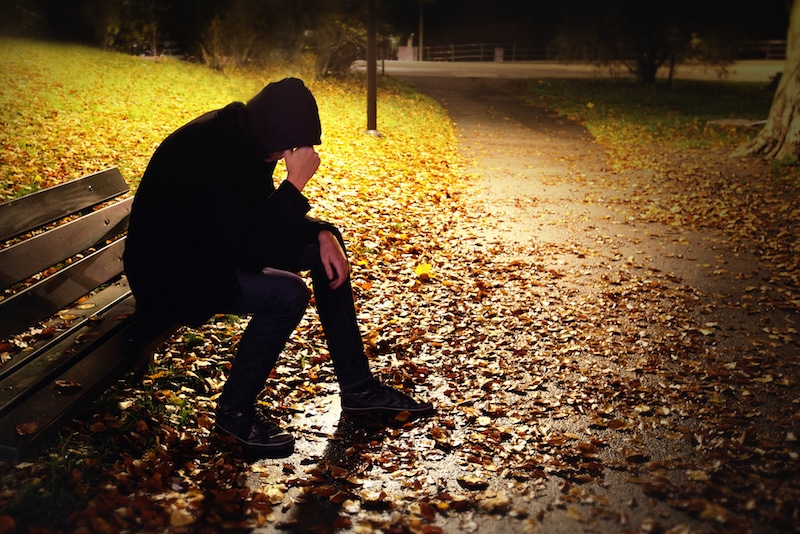Hunger & homelessness rise
Homelessness and hunger in American cities is up, according to a report from the U.S. Conference of Mayors organization.
Furthermore, members "do not expect homelessness and hunger to get any better in the next year," and "expect emergencies to increase during 2004," said James Garner, president of the conference and mayor of Hempstead, N.Y.
Requests for emergency food assistance went up in 88 percent of the surveyed cities, while emergency shelter requests rose in 80 percent of cities, according to the report, "U.S. Conference of Mayors-Sodexho Hunger and Homelessness Survey."
The report was sponsored by Sodexho, a food and facilities management company that performs jobs like food service and housekeeping.
The number of persons making emergency food requests increased by an average of 17 percent, while emergency shelter requests from homeless persons went up an average of 13 percent.
Cedar Rapids, Iowa Mayor Paul Pate called for a "safety net through which no one can fall through during these tight budget times."
About 90 percent of cities surveyed anticipated an increase in requests for emergency food and shelter during 2004. Out of 25 cities surveyed, 20 cited unemployment and unemployment-related problems as causes for hunger. The report also named high housing costs and low-paying jobs as major culprits.
Of the municipalities surveyed, 23 cities cited lack of affordable housing as the primary cause of homelessness. Other reasons included mental illness, low-paying jobs, substance abuse, domestic violence, poverty and release from prison, the report said.
Recent state budget cuts to programs addressing homelessness and hunger have exacerbated the problem, Gene Lowe, assistant executive director of the conference said. Funding cuts are having a "drastic impact on hunger and homelessness," he said.
"We need more affordable housing in this country," Lowe told United Press International. Of those seeking food assistance, 59 percent were families with children, and 39 percent were employed.
America’s problem with hunger is different than other countries, Julie Brewer, a senior domestic policy analyst of Bread for the World, a hunger activism group said.
"We have an abundance of food — the problem is access to that food," she said.
She cited a report by the USDA that said 9.3 million people, or 3.4 percent of the population, is hungry, while 35 million are "food insecure" which affects the amount and quality of the food they eat.
Homeless people in cities surveyed tended to remain homeless for an average of five months, the report said. 40 percent of the homeless were families with children, 41 percent were single men, 14 percent were single women, and youths on their own made up 5 percent.
Substance abusers accounted for 30 percent of all homeless, the mentally ill 23 percent, and veterans 10 percent.
Shelters are not always an ideal solution, with 60 percent of shelters prohibiting men and boys as young as 12 from staying with the rest of the family, and almost half forcing residents to vacate the shelter during the day.
Broken down racially, nearly half of all homeless — 49 percent — are African-American, 35 percent are white, and 13 percent Latino/Hispanic, while 2 percent are Native American and 1.0 percent, Asian.
Former foster care recipients are especially vulnerable to homelessness, Mangano said. Young people between 18-24 "aging out of foster care" are "too old for youth programs and too young for adult programs," he said.
The conference also presented a 10-year plan to end chronic homelessness, "The 10-Year Planning Process to End Chronic Homelessness in Your Community," by the U.S. Interagency Council on Homelessness.
Chronically homeless people account for only 10 percent of all homeless, but utilize 50 percent of public resources such as emergency rooms, psychiatric facilities, shelters, and detox centers, according to the report. Causes for this phenomenon include multiple episodes of homelessness, disability caused by addictions, mental or physical illnesses, and frequent hospitalization, unemployment, and incarceration. They are on the average loners in their early 40s.
Keys to solving chronic homelessness include partnerships across public, private and non-profit sectors, sending out people to work with the chronically homeless, and specialized housing, the report suggests.
"Partnership trumps partisanship," Philip Mangano, executive director of the U.S. Interagency Council on Homelessness, said.
Specialized housing is being partnered with support services, Mangano said. He cited an 80 percent retention rate in a specialized housing complex in Massachusetts for the mentally ill.
Mangano indicated that there is also a downturn of raids and other punitive actions against the homeless. In New Orleans, for example, the police have been "sensitized" to the needs of the homeless, he said.
Sodexho USA chief operating officer Richard Macedonia complained of insufficient media publicity on hunger and homelessness.
"You would hardly know it by watching the nightly news, but more people throughout North America face hunger and homelessness each day than are threatened by HIV, SARS, drugs, violence, war and terrorism combined," he said.
"It is hard to imagine anything else posing a comparable threat to the health and welfare of this society and receiving so little attention," he said.
But things are being done now to combat homelessness, Mangano said. 20 federal agencies – including Housing and Urban Development, the U.S. Department of Agriculture, and the Department of Labor — are collaborating to make resources more available to the homeless, and approximately 60 cities and counties have developed 10-year plans to combat chronic homelessness, he said.
Mangano is striving to raise the number of counties and cities with plans against homelessness to 100 by June, said Lowe.
"We are all tired of homelessness, most of all homeless people themselves," Mangano said.
